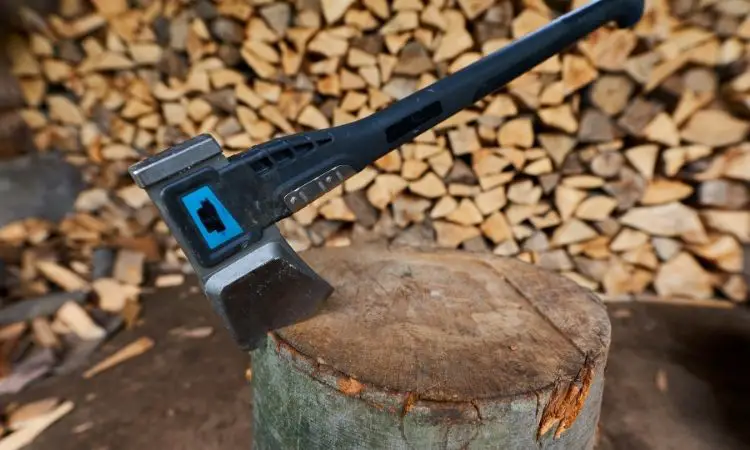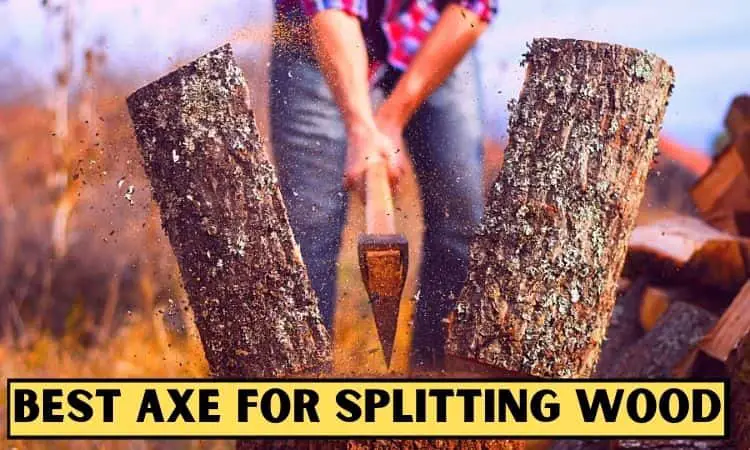Axe are a tool that has been used for centuries for a variety of tasks, such as chopping wood, splitting logs, and more. There are two main types of axes: the chopping axe and the splitting axe. So, what's the difference between these two types of axes?
In the blog post, we'll get to know about the chopping axe and the splitting axe. We'll learn about their differences in terms of design, weight, blade, and more. Finally, we'll find out which type of axe is best suited for different tasks.
What a Splitting Axes?
A splitting axe is a type of axe that is designed specifically for splitting logs. It has a heavier blade than a chopping axe, and the blade is typically more curved. This type of axe is perfect for splitting logs in half, as it can easily penetrate the wood.
What is a chopping axe?
A chopping axe is a type of axe that is designed for chopping wood. It has a lighter blade than a splitting axe, and the blade is typically more straight. This type of axe is perfect for chopping wood into smaller pieces, as it can easily chop through the wood.
So, what's the difference between these two types of axes?
The biggest difference is in the blade. Splitting axes have heavier and more curved blades, while chopping axes have lighter and more straight blades. Another difference is in the weight. Splitting axes are typically heavier than chopping axes, as they need to be able to penetrate the wood. Finally, the design of these two types of axe is different. Splitting axes have a more curved design, while chopping axes have a more straight design.
So, which type of axe is best for you?
It all depends on what you need to use it for. If you need to split logs, then a splitting axe is the best choice. If you need to chop wood, then a chopping axe is the best choice. Some factors also depends on the quality of wood . If the wood is very hard, then you may need a heavier axe.
How Do I Know What Axes is Perfect For The Task?
There is no one-size-fits-all answer to this question. It all depends on the type of wood, the quality of the wood, and what you need to use it for. Let us know all the important details.
Wood Types:
There are lots of different types of wood, and each type of wood is different. Some woods are harder than others, and some are easier to split.
Hard: These woods are the hardest to split. They include oak, maple, cherry, walnut, and more. If you need to split these types of wood, you'll need a heavier axe.
Soft: These woods are the easiest to split. They include pine, cedar, fir, and more. If you need to split these types of wood, you'll need a lighter axe.
Quality of Wood:
The quality of the wood also makes a difference. If the wood is low quality, it will be easier to split. If the wood is high quality, it will be harder to split. The more wood patch the more hard to split the wood for example.
Do Splitting Axes and Chopping Axes Have Different Sizes?
The size of the axe depends on the type of wood. If you need to split hardwoods, you'll need a larger axe. If you need to split softwoods, you'll need a smaller axe. The quality of the wood also makes a difference. If the wood is low quality, it will be easier to split. If the wood is high quality, it will be harder to split.
How You Can Maintain Splitting Axe and Chopping Axe?
It is important to maintain your axe to keep it in good condition. You should always clean the axe after use, and you should also sharpen the blade regularly. Splitting axes and chopping axes require different types of maintenance. Splitting axes need to be cleaned more often, as they can get very dirty when used to split logs. Chopping axes need to be sharpened more often, as they can get dull quickly when used to chop wood.
What Other Alternatives Of Axes?
For Manual Options:
Other alternatives to axes include saws, hatchets, and mauls. However, these alternatives are not as effective as axes.
- Saws
- Hatchet
- Maul
For Electric Options:
If you need a more powerful option, you can use different powerful electric options.
- Electric Log Splitter
- Gas Log Splitter
Should You Need to Have Your Axes Sharpened Frequently?
Generally, you should sharpen your axe every few uses. However, this depends on how often you use it and what you use it for. If you use it for splitting logs, you'll need to sharpen it more often. If you use it for chopping wood, you'll need to sharpen it less often.
But, How Often Should You Really Sharpen Your Axe?
It really depends on how often you use your axe and what you use it for. If you use your axe every day, you'll need to sharpen it more often. If you only use it once a week, you'll need to sharpen it less often.
As a general rule of thumb, you should sharpen your axe every few uses. However, this depends on how often you use it and what you use it for.
Should you search for a branded splitting or chopping axe?
There are many brands that make Splitting axe and chopping axe. Some of the most popular brands are Fiskars, Husqvarna, and STIHL. However, there are many other brands that make Splitting axe and chopping axe.
Conclusion:
In conclusion, whether you plan to use a splitting axe or a chopping axe, it's crucial to understand how to utilize it. If you don't know how to use an axe, you could seriously injure yourself. Always be sure to read the instructions carefully before using an axe. If you have any questions, be sure to ask a professional. Splitting axe and chopping axe may seem like they are the same thing, but they are actually quite different.
So, Now that you know the difference between a splitting axe and a chopping axe, which one will you choose?

I am a graduate of Bangladesh Agricultural University, where I delved into various agricultural disciplines, equipping me with a profound understanding of agriculture. Beyond academics, I have hands-on experience in gardening and crop cultivation. My passion is to embrace sustainable farming and horticulture. With a BSc in Agriculture, I am dedicated to promoting environmentally conscious and efficient agrarian practices.
Bachelor of Science (BSc) in Agriculture (Hons.)
Master of Science. (Sustainable Agriculture & Food Security ) (MS)
Bangladesh Agricultural University




